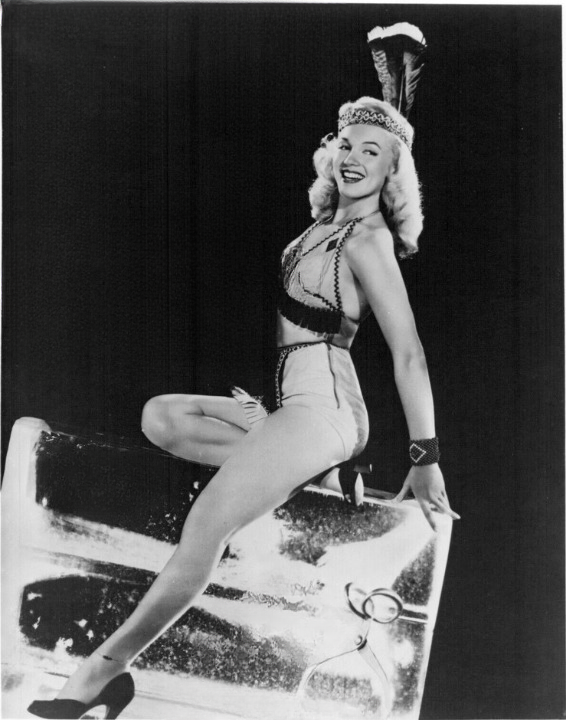The Tragic Brilliance of a Timeless Beauty
Her smile could stop time, her presence could light up the world — yet behind those dazzling eyes lay a haunting sadness few ever saw. Marilyn Monroe, the golden goddess of Hollywood, embodied the dreams and desires of an entire generation. But fame is rarely kind. Beneath the diamonds and laughter, she carried scars of loneliness, betrayal, and the relentless search for love. Her story remains one of the most beautiful and heartbreaking ever told — the rise and unraveling of a woman who shone too brightly for her own world.
From Norma Jeane to Marilyn
Long before the fame, she was Norma Jeane Mortenson — born in Los Angeles on June 1, 1926. Her early life was shaped by chaos: a mother lost to mental illness, a father who never came home, and foster homes that blurred together in memories of fear and longing. She yearned for stability, for love that didn’t disappear overnight. The Hollywood icon began not as a starlet in silk, but as a little girl searching for safety in a world that rarely offered it.
The Marriage That Saved Her — and Trapped Her
At sixteen, desperation forced Norma Jeane into adulthood. Facing the threat of another orphanage, she married her neighbor, James Dougherty, in 1942. It wasn’t love — it was survival. While he served overseas, she worked in a munitions factory, her hands stained with grease and paint. Then, destiny intervened. A photographer noticed her beauty, snapped her picture, and unknowingly altered the course of history.
Becoming Marilyn Monroe
By 1946, the shy factory worker had transformed into “Marilyn Monroe.” She signed with Twentieth Century Fox, dyed her hair platinum, and crafted a persona that the world would never forget. Yet, behind that confident name was a woman still learning who she was. Marilyn didn’t just want fame — she wanted to matter, to be loved, to be seen for more than a body in a dress.
The Meteoric Rise of a Legend
Her early film roles in The Asphalt Jungle and All About Eve revealed sparks of brilliance, but it was Niagara (1953) that turned her into Hollywood’s most desired woman. With Gentlemen Prefer Blondes that same year, her sultry performance of “Diamonds Are a Girl’s Best Friend” became immortal. By the time The Seven Year Itch (1955) hit theaters — and that iconic white dress scene flooded headlines — Marilyn Monroe wasn’t just famous; she was fame itself.
The Woman Behind the Image
Despite her success, Marilyn longed to be respected for her mind, not just her beauty. She enrolled at the Actors Studio in New York, defying Hollywood’s attempts to keep her a silent blonde. Her powerful performances in Bus Stop (1956) and Some Like It Hot (1959) revealed her range and vulnerability. That Golden Globe win wasn’t just a trophy — it was proof she was more than the world’s fantasy. But even as her artistry blossomed, her personal life began to fracture.
Love’s Fragile Dream: Joe DiMaggio
In 1954, Marilyn married baseball legend Joe DiMaggio. The world called them America’s dream couple — the athlete and the star. But the fairytale crumbled quickly. Joe wanted a traditional wife; Marilyn was too big, too bright, too free. His jealousy of her fame and her need for independence collided like fire and glass. Within nine months, their marriage ended, though Joe’s devotion to her never truly faded.
Arthur Miller and the Search for Understanding
Two years later, Marilyn found a different kind of love in playwright Arthur Miller. She believed he saw her soul — not the image. Their union seemed grounded in intellect and tenderness, yet even that couldn’t survive the weight of fame and her inner demons. By 1961, they had drifted apart, leaving her once again in the shadow of her own legend. She had everything — beauty, wealth, fame — and yet, she was achingly alone.
A Legacy Wrapped in Mystery
Marilyn Monroe’s story remains one of light and shadow — of a woman who gave everything to the world and received only fleeting moments of peace in return. Her death at 36 left behind questions that will never be fully answered, but her image endures: radiant, tragic, unforgettable. Behind every smile she gave the camera was a whisper of longing. And though she left too soon, Marilyn’s light still flickers — timeless, fragile, and forever golden.
